
Home, Auto Repair Library, Auto Parts, Accessories, Tools, Manuals & Books, Car BLOG, Links, Index
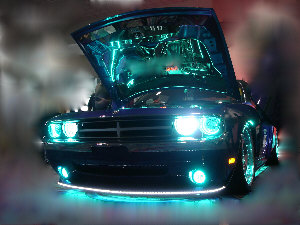


Headlights are an important safety device on your vehicle. Headlights increase visibility day and night, and are essential for safe nighttime driving. But nothing lasts forever and headlamps are no exception. After 1,000 or more hours of operation, the light-emitting tungsten filament in some headlights may burn out - causing the headlight to fail. Headlights can also dim with age as vapor residue from the filament builds up on the inside of the glass. Vibration can also shorten the life of the headlights, and they are vulnerable to damage caused by stones and debris kicked up by other vehicles.
The loss of a headlight makes nighttime driving hazardous, and may even attract the attention of the local police. A burned out taillight, stoplight or turn indicator lamp creates a hazard for other motorists because these lamps signal a vehicle's directional intentions to others.
So when a headlight fails, you might consider replacing it with some type of upgrade headlight to improve lighting performance. Older vehicles like classic cars, muscle cars and vintage cars can often benefit from a performance headlight upgrade that boost light output and enhance visibility. Even late model vehicles with halogen headlights can be upgraded with brighter replacement bulbs, or in some cases converted to HID headlights. So keep reading and we'll tell you about some of the options that are available.

Years ago, all headlamps were glass sealed beams. If a 1980s or older car or truck needs a replacement headlamp, there were only a few basic sizes of round and rectangular sealed beams:
* Round 6014 HI/LOW sealed beams for two headlight applications
* Round 4000 LOW beams and round 4001 HI beams for quad headlight applications
* Rectangular 6052 HI/LOW sealed beam for two headlight applications
* Rectangular 4652 LOW sealed beam and 4651 HI sealed beam for quad headlights.
Most of those older-style sealed beams were originally standard incandescent lamps. These type of headlights produce a yellowish colored light which makes objects seem duller than how they appear in natural daylight. The optic qualities of sealed beams is also rather crude with just a simple parabolic or dish shaped reflector behind the filament. The light is redirected somewhat by the lens that are cast into the glass cover on a sealed beam, but the light pattern is still more like a flood lamp rather than a spot light with glare toward the center and a lot of diffusion all around. Not the best optics for nighttime driving.
In 1978, the federal government revised its headlamp regulations to allow the use of "halogen" sealed beams. Halogen lamps are brighter and last longer than regular lamps because the bulbs contain a small amount of bromine gas (one of five elements in the halogen chemical family). The bromine gas allows the use of a smaller, hotter tungsten filament because bromine redeposits the microscopic particles of tungsten that boil off the filament back onto the wire. This extends the life of the bulb and prevents the glass from darkening as the bulb ages.
Halogen lamps are a good headlight performance upgrade for older cars that were originally equipped with standard sealed beam headlights because the halogen lamps produce more light with the same or less current. How much brighter are they? A conventional incandescent bulb generates 16 to 18 lumens of light per watt compared to 20 to 22 or more lumens per watt for a standard halogen bulb. Some high output halogen bulbs produce as much as 28 to 33 lumens per watt. The higher output of a halogen headlamp throws more light on the road to improve nighttime visibility and extend the driver's visual range. The light is also whiter than a regular incandescent bulb, which improves visibility too.
Halogen sealed beams have an "H" prefix on their part number and are available in various sizes for round, rectangular and low-profile rectangular headlamps. In most cases, replacing a standard sealed beam headlight with a halogen sealed beam is a simple swap. Both headlights should be replaced at the same time.
Replacing a headlights usually requires removing an outer trim ring around the front of the light, then removing the mounting screw(s) that hold a retainer around the outer front edge of the sealed beam. Once the headlight is loose, it can be moved forward to unplug the electrical connector on the back.

In 1983, the federal government approved the use of "composite" headlight assemblies with plastic covers and replaceable bulbs. This gave the vehicle manufacturers more design freedom, reduced the lighting system's vulnerability to stone damage and made it easier in many instances to replace a headlamp. It also created a number of new halogen bulb configurations.
Some of the more popular replacement halogen bulbs include 9004, 9007, 9008 and H4 for two headlamp systems, 9006, H1, H7 and H11 for low beam quad headlamp applications and 9005 and H9 for the high beam on quad lamp systems. For fog and auxiliary lamps, other popular halogen replacement lamp sizes include 9040, 9045, 9055, 9140, 9145, 9155, H3 and H8.
One of the drawbacks of composite headlights with Lexan or Polycarbonate covers is that the plastic tends to dull and discolor with age. This is caused by exposure to sunlight. Ultraviolet light reacts with the plastic causing the plastic to degrade. The clear outer lens cover may turns yellowish or milky in appearance. A discolored cover does not pass light as efficiently as clear plastic causing a loss of lighting performance.
The entire composite headlight assembly can be replaced to restore both the appearance and performance of the headlights, but a more economical solution is to get a composite headlight restoration kit. These kits include a special buffing compound for removing the cloudy top layer from the plastic. It takes some effort to polish away the top layer, but when the buffing is finished the headlights look like new again.
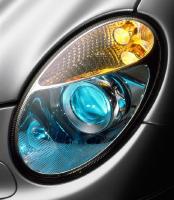
In the late 1990s, two new types of "xenon" headlamps were introduced. One type is the High Intensity Discharge (HID) Headlights
that use a special high voltage bulb that contains no filament. Inside the HID bulb are two electrodes separated by a gap and a mixture of xenon gas, mercury and halide salts. A ballast unit steps up the base voltage supplied to the HID lamp to create an electrical arc between the electrodes. This produces a "plasma discharge" inside the bulb that gives off a brilliant bluish-colored light.
HID lighting systems are much more efficient than standard halogen headlamps, producing about 75 lumens per watt. And because a HID bulb has no filament to burn out, they last three to five times longer than a standard halogen bulb. But the required ballast electronics also makes HID lighting systems very expensive so they are used primarily on high-end luxury cars like Mercedes, Audi, Lexus, Lincoln and others.
HID replacement bulbs include D1S, D1R, D2s and D2R.
Many HID headlights have an ellipsoidal projector style lens that shines the light further down the road. The optics on many of these headlights is excellent, with good diffusion across the entire beam pattern, no hot spots and a sharp cutoff in the beam pattern right at hood level. This reduces glare in the eyes of oncoming drivers and puts more light on the road ahead where it is needed.
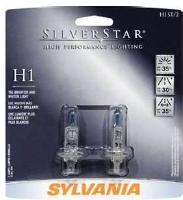
Aftermarket HID lighting kits are available to upgrade a vehicle's lighting performance but can cost hundreds of dollars for a true HID conversion. Installing an HID lighting kit also requires cutting and splicing wiring to rewire the existing headlight circuitry. Professional installation is recommended if you are not comfortable with doing the rewiring yourself.
A more affordable upgrade alternative is to replace the standard halogen bulbs in your headlights with some type of aftermarket performance bulbs. These include the "blue bulbs" and "high intensity" bulbs that are found in most auto parts stores. Aftermarket xenon bulbs have a tungsten filament like a standard halogen bulb, but contain xenon gas inside the bulb that allows the bulb to burn hotter and brighter (up to 30 percent more light depending on the application). A special blue coating on the surface of some bulbs helps recreate a bluish light that is similar in appearance to that produced by a more expensive HID lighting system. Best of all, most of these performance headlight bulbs don't cost much more than standard halogen bulbs.
There is a trade-off, however. Because these bulbs burn hotter to produce more light, they also have a reduced service life. The brighter the bulb, the shorter the life. The hours of use may be printed on the bulb package for comparison purposes. In some cases, the reduction in life may be 20 percent to 30 percent or more, so keep that in mind when making your purchasing decision.
Obviously, the more lights you have on your vehicle, and the higher their wattage rating and lumen output, the higher the load on the electrical system. This may require replacing some fuses with ones with a higher amp rating, and/or replacing some of the original wiring with heavier gauge wiring that can safely handle the higher current loads without overheating.
WARNING: Replacing a standard fuse with one that has a higher amp rating may be dangerous because the higher amp fuse may not provide adequate protection against overloading and overheating the wiring circuit.
For example, replacing a 20 amp fuse with a 30 amp fuse may prevent an overloaded circuit from blowing the fuse, but it will also allow up to 50 percent more current to flow through that circuit. This may cause the wiring to overheat and short out if the gauge of the wire is not heavy enough to handle the extra load.
A typical H11 halogen low beam bulb will draw about 4 to 4.5 amps. So for a pair of headlights, the amp load will be about 8 to 9 amps on low beam.
A typical H9 halogen high beam bulb will draw about 4.5 to 5.0 amps when the high beams are on (9 to 10 amps for both high beams).
If the low and high beams are all on at the same time (four bulbs total), the combined amp draw on the headlight circuit will be around 17 to 19 amps. If the circuit is protected by a single 20 or 25 amp fuse, there will be little margin for overloading if higher output bulbs are installed. Also, the headlight circuit may also include side marker lights, turn signals, brake lights and the license plate light. The amp load created by all of these other bulbs must also be taken into account when determining how much of a load the circuit can safely handle without blowing a fuse.
Fog lamps are usually a lower wattage, and typically draw only about 2.7 to 3.0 amps per bulb. However, high wattage high lumen offroad bulbs can pull much higher loads of 10 to 20 amps!
HID headlamp bulbs initially draw more current during the initial start up (about 6 to 7 amps per bulb), then gradually taper off and stabilize to around 3.6 to 3.8 amps after 15 to 30 seconds. Because of this, the total amp load on the electrical system can be less than with standard halogen bulbs.
As for LED headlamps, it depends on the rating of the bulb. An 80n watt LED headlamp will usually raw less than one amp per bulb, with many being as low as 0.5 to 0.6 amps. Because of this, you can actually reduce the load on the electrical system by converting to LEDs -- or you can add more lights without overloading existing circuits.
The best headlights in the world won't deliver good lighting performandce if they are not aimed correctly. If the lights are aimed too low, they won't project very far down the road. If the headlights are aimed too high, they may blind or annoy oncoming drivers.
Correct adjustment should keep the low beam pattern just at or slightly below hood level for maximum forward visibility. This can be done by shining the headlights at a wall or garage door about 30 feet away, then adjusting the aiming screws to raise or lower the beam pattern as needed.
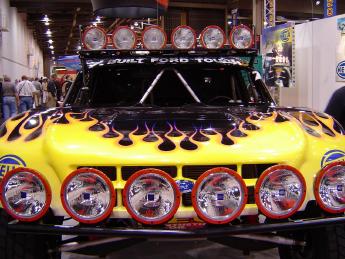
All kinds of aftermarket HID and LED headlamps with high candle power ratings are available for vehicles today, but many of these products are labeled for "off-road" use only because of their extremely high output. If you drive with them on the street, do NOT use the auxiliary lights when there is oncoming traffic because the extremely bright lights could temporarily blind oncoming drivers.
If you are installing auxiliary headlights on your car, truck or SUV, keep in mind that extra headlights pull extra amps from the charging system and battery. Depending on the wattage of the headlights, you may have to replace the stock alternator with a higher output alternator. Your stock alternator may not be able to handle the higher loads and may fail prematurely or allow your battery to run down.
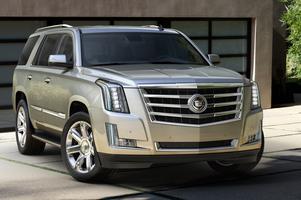
Most new cars, SUVs and light trucks are factory equipped with LED Headlamps as well as LED taillights, indicator lights and trim lights. What started out as a styling gimmick for brand identity has become mainstream lighting technology.
LED lighting technology has come a long ways in a relatively short period of time. The latest generation of LEDs are more energy efficient and produce more light per watt than older generations of LEDs. The color and quality of the light is also much better, being much whiter and brighter for better vision and safety without the annoying bluish glare that some HID (High Energy Discharge) headlights produce.
The biggest advantage of LEDs is that they reduce energy consumption (which translates into less load on the charging system for better fuel economy). The also last a long time, almost the "lifetime" of many vehicles (tens of thousands of hours of operation). Their longevity is good for motorists because it significantly reduces the risk of driving with a burned out headlight, taillight, brake light or turn signals.
The only downside with LED headlights is that if a light fails, you may have to replace the entire headlight assembly if the individual bulbs are not replaceable.
Aftermarket LED upgrade lamps are available for many headlights, brake lights, turnsignals and interior bulbs. Most of these LEDs can replace the conventional bulbs with no modifications.
When a headlight burns out, finding the correct replacement bulb is essential. The headlight control modules on some late model vehicles won't work properly with replacement headlight bulbs that have a different wattage rating.
With halogen and xenon headlamp bulbs, the lamp receptacle in the headlamp housing and wiring connectors are configured differently to eliminate the risk of installing the wrong replacement bulb. The bulb is usually replaced from the backside of the headlight housing.
To remove the old headlamp bulb, refer to your vehicle owners manual as removal procedures can vary. On most applications, the bulb socket is twisted a quarter turn to release it from the housing. But on others, the socket may be secured with a metal wire or clip that has to be released before the bulb socket can be pulled out of the housing. Don't attempt to jerk it out as this may damage or break the bulb socket or housing.
CAUTION: DO NOT attempt to change a headlight bulb that is still hot. If you are replacing a bulb that still works with an aftermarket headlight performance bulb, wait 10 minutes or so for the headlight bulbs to cool before you attempt to remove them. The bulbs get extremely hot when they are on and can cause a nasty burn if you touch one while it is still hot.
CAUTION: DO NOT touch the glass portion of a halogen bulb when you are installing. Oil residue from your fingers can react with the quartz glass on the bulb and cause it to burn out after a short while. Tough only the metal or plastic base of the bulb, or use a cloth or tissue to protect the glass when handling and installing the bulb.
Small light bulbs are used for side marker lights, turn signals, stop lights, taillights, center high mounted stop lamps (CHMSL), interior lights and instrument lights. Small bulbs come in a variety of shapes, sizes, wattage ratings and terminal configurations. Small bulbs can be tricky to match, so always refer to a lighting products catalog to find the correct replacement bulb for your vehicle. Two bulbs that appear to be similar may have different wattage and resistance ratings. Using the wrong bulb may cause the bulb to run too hot, or it may overload a circuit or cause other electrical problems.
Comparing bulbs and referring to the number on the side of your old bulb is also a good idea. But keep in mind the old bulb may not be the correct one if someone replaced it previously and installed the wrong bulb. That might explain why the bulb failed.
On some newer vehicles, "light out" modules are used to sense failed bulbs and alert the driver when a lamp fails. If a replacement bulb does not have the same resistance and wattage rating as the original, it can sometimes cause the module to illuminate the "light out" warning lamp even though the bulb is working.
It's also a good idea to check the fuses when replacing bulbs, and buy some extras for future emergencies.
Subaru recalls more than 188,000 Impreza sedans and wagons from the 2017 through 2019 model years to fix a problem with the reflectors in the headlight housings. The out-of-position reflectors do not direct the light ahead of the vehicle properly, reducing vision for the driver and increasing glare for oncoming vehicles.
The National Highway Traffic Safety Administration (NHTSA) informed Subaru that it had discovered in testing that the Impreza’s lights were not in compliance with Federal Motor Vehicle Safety Standards Number 108. In its own investigation, Subaru determined that the molds that had been used in production between September 2016 and August 2019 had been damaged.
Subaru dealers will check the alignment of the reflectors on recalled vehicles and correct them as needed.
General Motors recalled more than 740,000 2010 to 2017 GMC Terrain SUVs because the headlight beams are too bright and cause glare for oncoming drivers.
Documents posted by the National Highway Traffic Safety Administration (NHTSA) revealed that reflections caused by the headlight housings can illuminate some areas with too much light. The agency says this can reduce visibility for other drivers, increasing the risk of a crash. The headlamps in affected vehicles have a luminous intensity of 450-470 cd (candlepower), which exceeds the limit of 125 cd.
The NHTSA recall campaign number is 22V137000.
The fix for the issue is a headlamp applique that is installed over the high beam headlight cover that dims the light slightly so the light output does not exceed the 125 cd limit.
2018 and newer GMC Terrain models are not affected due to a different headlight design.
A class action lawsuit against Nissan involving the headlights on 2013 to 2018 Nissan Altimas manufactured with halogen headlamps claimed a defect in the reflective coating inside the headlight housings causes the low beam headlights to dim over time, reducing visibility and increasing the risk of an accident during night driving.
Terms of the settlement include:
(1) Reimbursement for Headlamp Replacements Prior To October 25, 2021: If you paid to replace your headlamps due to dimming prior to October 25, 2021, you can submit a claim for reimbursement. The deadline to submit a reimbursement claim was April 25, 2022.
(2) 3-Year extension of the Warranty covering headlamp dimming due to delamination. Nissan will provide a 3-year extension of the manufacturer's warranty covering headlamp dimming due to delamination, for a total of 6 years of coverage. This warranty is transferable and subject to the same terms as the standard warranty. To receive replacement headlamps within the extended warranty period, take your vehicle to an Authorized Nissan Dealer.
(3) Option to immediately replace the defective headlights at an Authorized Nissan Dealer whether your vehicle is in or out of the warranty period.
A recent headlight study performed by the Insurance Institute of Highway Safety found that most new vehicles do NOT have very good headlights. They tested the range of the low beams on 31 new cars and found that only one, a Prius V with optional HID headlights, achieved a "good" rating. Eleven managed to achieve an "acceptable" rating, but nine were ranked "marginal" and 10 were given a "poor" rating.
The headlight performance ratings were based on the ability to illuminate objects in the road ahead on low beam. The best headlights could illuminate objects at a distance of nearly 400 feet while the poorest ones could only illuminate objects at 130 feet.
The headlight technology ranged from standard halogen bulbs to HIDs to LEDs, yet there was no consistency in which type of headlight system performed best. According to the report, a vehicle's price tag is no guarantee of the headlight performance. Many of the poor-rated headlights belong to luxury vehicles, including the BMW 3 series which achieved the lowest-score in the headlight performance study.
To read the complete report and which car models were rated acceptable, marginal and poor, Click Here.
 Related Articles:
Related Articles: Click Here to See More Carley Automotive Technical Articles
Click Here to See More Carley Automotive Technical Articles